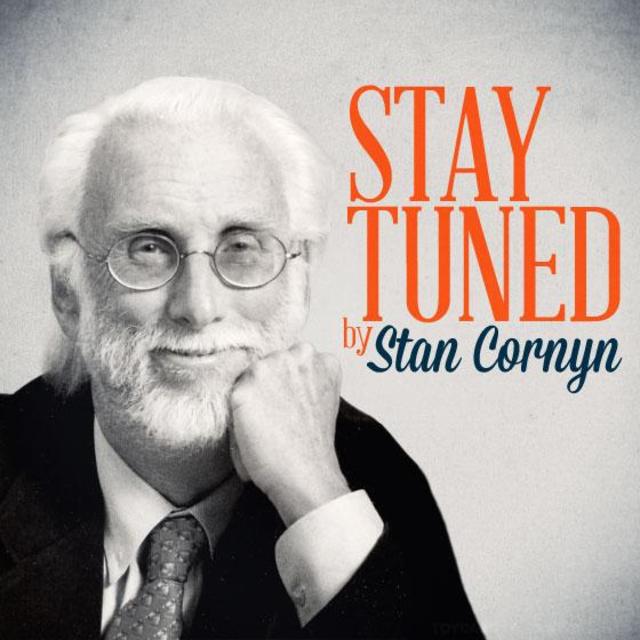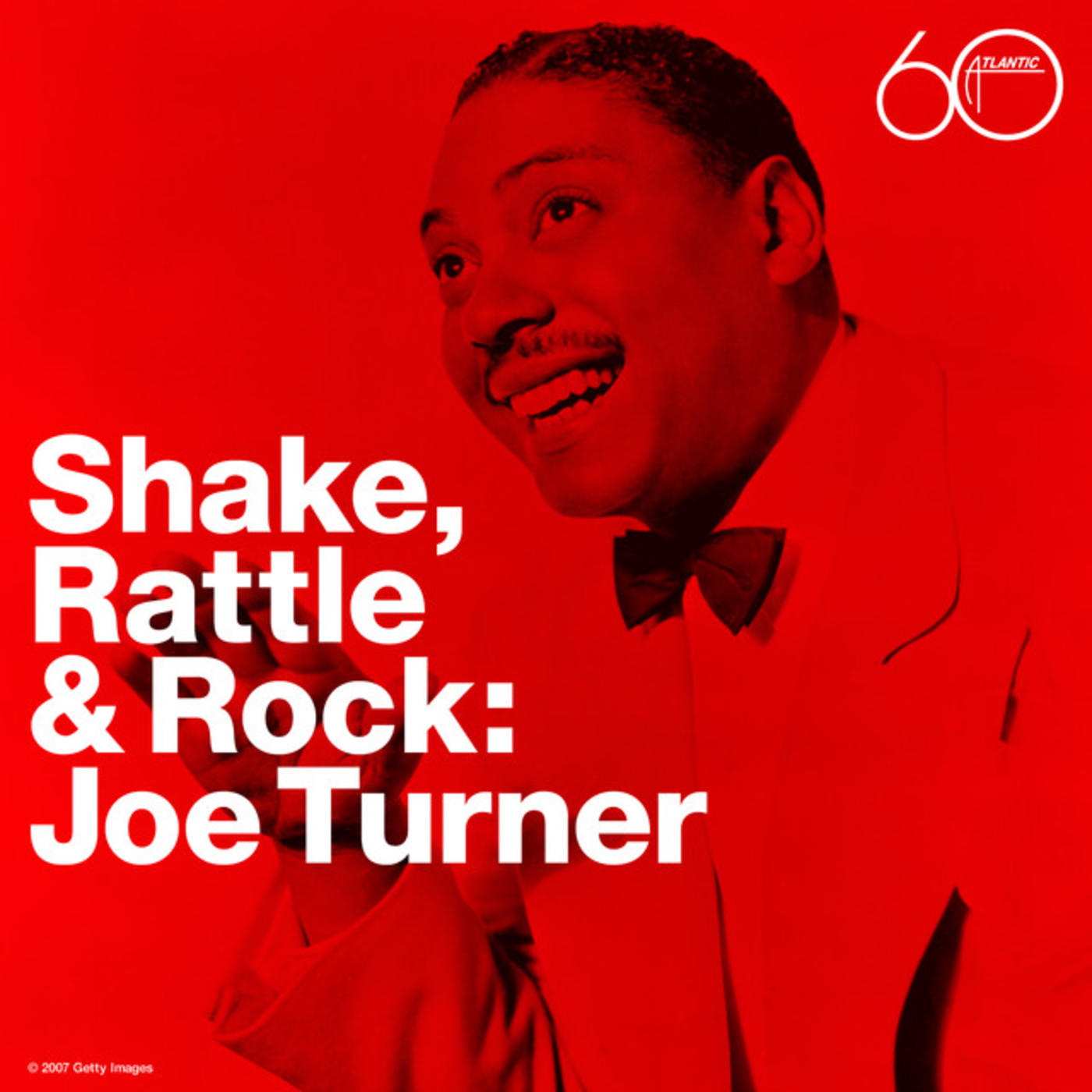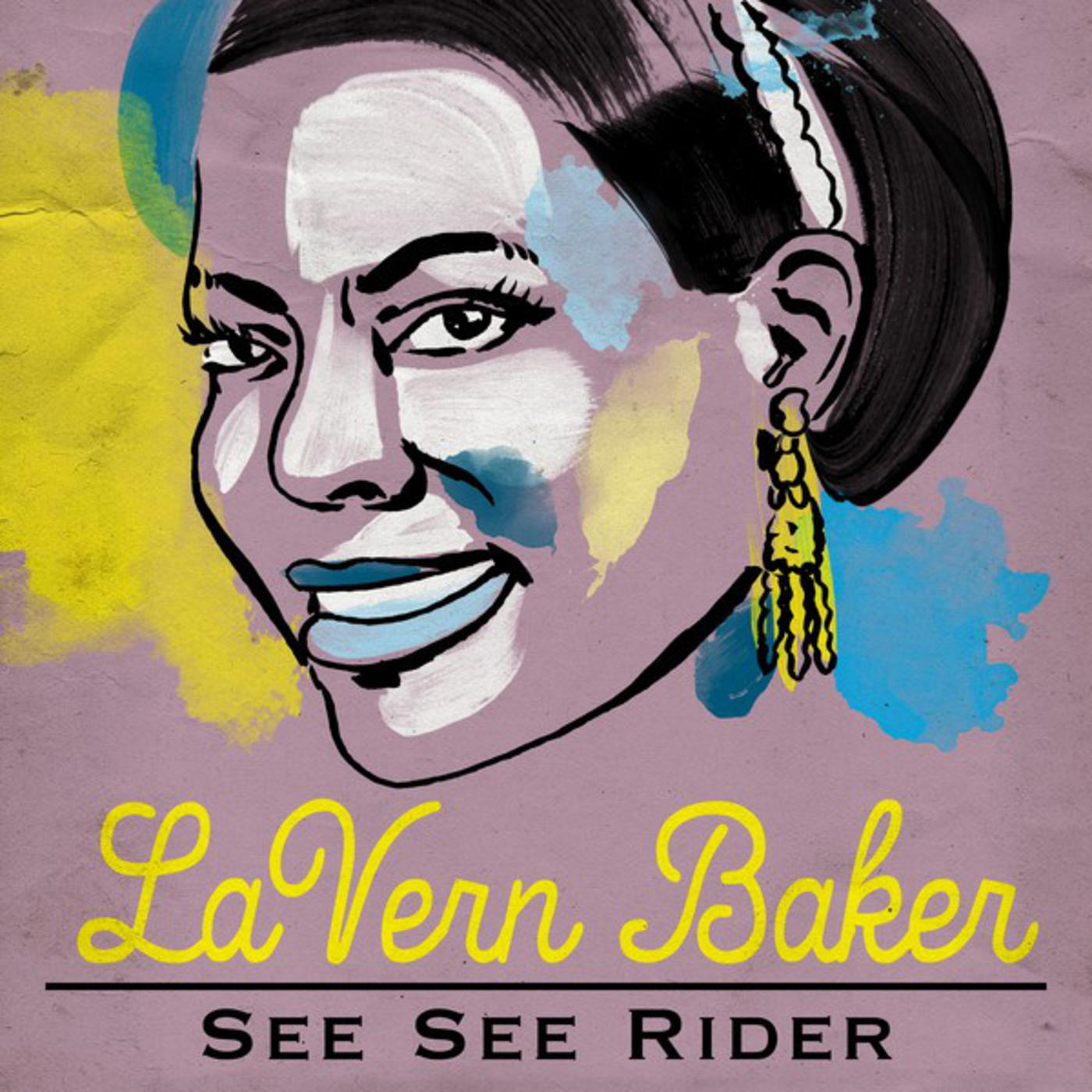Stay Tuned By Stan Cornyn: When Atlantic Was Single

Every Tuesday and Thursday, former Warner Bros. Records executive and industry insider Stan Cornyn ruminates on the past, present, and future of the music business.
Atlantic Records was officially born with its first release in late January 1948. First release: Tiny Grimes' “That Old Black Magic.” Ho-hum.
(Another “Stay Tuned,” entitled AHMET LEARNS HOW, reveals tales of those very early years. To get there fast, click here.)
From Atlantic, out came singles, some 78s and some 45s, but always one tune per side, two per record.
In Atlantic’s early years (from 1948 through 1958 right here) some records and artists became big sellers, even though those artists may today be only slightly remembered. Let’s fix that.
Let’s skip over Aretha and skip around Ray, and here remember those others who had their moments.
Remember who, only later on, would get their singles compiled into albums. But for now, it’s Atlantic concentrating on selling singles.
Ruth Brown had been “discovered” in Washington in 1948. Her first hit came in May, 1949: “So Long.”
She became, for those years, a star, once described this way: “In the South, Ruth Brown is better known that Coca Cola.” But, she (“Miss Rhythm”) and Atlantic parted ways in 1961, and after cutting 80 songs, Ruth was out of the record business. For years.
Still, because of her, Atlantic was known as “The House That Ruth Built.”
It feels now like paying some attention to those other singers of singles, those other major artists for Atlantic during its early years, stars now off the radio, but worth good memories.
Let’s start with...
LaVern Baker
In the mid-1950s had come LaVern Baker, and around then producer Jerry Wexler got a prominent job at Atlantic. Wexler was in 1953 (before the term became well known) a “nerd.” He was deep into black music, Southern music, simple singles. He worked record sessions beside Ahmet, the two of them often making up songs on the spot, songs, as he later admitted, they were often “formula ditties matched with lyrics not likely to rival Cole Porter’s.”
LaVern, he felt, stood “smack dab in the middle of the great tradition of Ma Rainey and Bessie Smith.”
With LaVern, Ahmet and Jerry devised the ballad “Tomorrow Night” and the nursery jingle “Tweedlee Dee.”
Tweedlee dee tweedlee dee
Give it up give it up
Give your love to me
Tweedlee dot tweedlee dot
Gimme gimme gimme gimme
Gimme all the love you got
Hump-be-ump-bump-bump
“Tweedlee” put LaVern on the pop charts, although, as a black artist, her single was quickly covered by a white singer, George Gibbs (“Her Nibs”), whose cover version outsold LaVern’s. Chart-wise, Gibbs reached #2 and LaVern reached #14. (Baker tried to sue Gibbs, but that attempt failed.)
LaVern Baker often performed with her own backing group, The Gliders: together they made “Bop-Ting-a-Ling” (#3), “Play It Fair” (#2), and “Still” (#4, all these on the R&B charts).
1956: LaVern scores biggest, with a million seller – “Jim Dandy” – (which not only went #1 on the R&B chart but also #17 on the Pop chart.) She continued on at Atlantic for more years, including 1962’s “See See Rider.”
1964: After Atlantic, LaVern (sometimes called “Little Miss Sharecropper”) left for Brunswick Records. She married comedian Slappy White, and lived on in New York ‘til her death in 1997.
The King of Stroll
In 1966, after a spell on Columbia Records’ R&B label, Okeh, Chuck Willis moved over to Atlantic Records. He wore a turban, and at concerts he’d get intro’d as “The Sheik of the Shake.”
Out of the box came hits like “It’s Too Late (She’s Gone),” “Juanita,” and “Love Me Cherry,” but the gong sounded biggest with his major hit -- “C.C. Rider.”
Well now see, C. C. Rider,
well now see, see what you have done.
Well now see, C. C. Rider,
well now see, see what you have done.
Well you made me love you woman,
Now your man has come.
“C.C. Rider” came from a twelve-bar blues, first made famous by Ma Rainey, down in Atlanta, before Chuck Willis was born. For Atlantic in 1957, Willis’ version became a pop dance craze. The sound of marimbas in tremolo. A tenor sax solo that opened sax solos for all.
The “dance” was called “The Stroll,” and it became a teen rage. Dick Clark called Willis “The King of Stroll.” The Stroll was a relaxed dance, one even awkward teens could feel it on the ballroom floor.
It topped the R&B chart, as did other Stroll singles: “Betty and Dupree” and “Going to the River.”
Then, as if an omen, came Willis’ “Hang Up My Rock & Roll Shoes,” and at the peak of it all, Willis’ died in surgery in Chicago, where he died at age 30.
View The Stroll here:
McPhatter + The Drifters
The group named The Drifters had many, many different members and sounds during its lifetimes. Asking for The Drifters got to be as precise as going into a restaurant and asking for vegetables. Never sure what you’ll get.
Here’s one way The Drifters began. In 1953, Ahmet Ertegun on one of his nighttime prowls was in Birdland, the jazz club at 52nd and Broadway, to catch the group Billy Ward and His Dominos. The Dominos came on stage, and Ahmet right off saw that their star tenor, Clyde McPhatter, had left the group.
Ahmet that night went out to find Clyde.
After checking backstage, Ahmet headed uptown toward Harlem, where he finally knocked on the door of a furnished room. There Clyde was. Signing him took little encouragement. Ahmet got McPhatter to start his own group, for Atlantic Records. They’d be called The Drifters, and would meld gospel with rock, with most of its members coming from the gospel crowd.
McPhatter, who’d lived under record moguls for some time now, insisted on only one point: “Just one thing, Mr. Ertegun. I hope you’re not going to play drums on my sessions.”
To record, Ahmet Ertegun and Jerry Wexler set up the session in the front room of Atlantic’s early office. They stacked the desks to one side, engineer Tom Dowd setting up camp chairs and hanging his mikes, and Ahmet and Wexler jammed into a closet-sized control room with a four-mike, RCA mono mixer.
By September of ’53, Clyde McPhatter & the Drifters had their first hit: a song by writer Jesse Stone called “Money Honey.”
You know, the landlord rang my front door bell.
I let it ring for a long, long spell.
I went to the window,
I peeped through the blind,
And asked him to tell me what’s on his mind.
He said,
Money, honey.
Money, honey.
Money, honey,
If you want to get along with me.
Well, I screamed and I hollered,
I was so hard-pressed.
I called the woman that I loved the best.
I finally got my baby about half past three,
She said I’d like to know what you want with me.
I said,
Money, honey.
Money, honey.
Money, honey,
If you want to get along with me.
Clyde McPhatter and his Drifters kept up the heat at Atlantic. Between 1953 and 1955 follow “Such a Night,” “Honey Love,” “Bip Bam,” and their doo-wop version of “White Christmas.” But Clyde had also gotten his draft letter in March, 1954. That ended his time with The Drifters, but not with Atlantic.
Writer Nick Tosches said it: “If there is one voice through which the glories of R&B ran their course in the 1950s, it very well may be Clyde McPhatter’s.” His high tenor captured the fervor of that decade, the promises it sung of. He brought church singing to pop and R&B, becoming one of the first to sing soul music.
In the years to follow Clyde McPhatter sold his share of The Drifters to manager George Treadwell (husband of Sarah Vaughan), and moved on.
As a man on his own, soloist McPhatter continued at Atlantic, up through 1956’s “Treasure of Love.” In 1959 came his last Atlantic hit, “You Went Back on Your Word,” but his Atlantic contract had expired. McPhatter drifted on, to MGM for big money, then Mercury Records. He remained, as this chapter of life has mentioned, a Singles Guy. No album he ever recorded made the charts.
1972. He died in his sleep of a heart attack at the age 39.
The Biggest Joe Was Turner
Atlantic’s excitements were usually signing artists with voices like four founding fathers -- Ahmet Ertegun, Herb Abramson, Nesuhi Ertegun, and Jerry Wexler -- had heard and loved when they were in their own teens. Way back then, pre-rock, when sizzle was called boogie-woogie.
Of these, a large one had made records back in the late 1930s for a label called Vocalion. He was a boogie woogie pianist in Kansas City, and he could shout the blues.
Back in 1938, Big Joe Turner recorded a 12-bar blues, “Roll ‘Em Pete,” for Vocalion Records, a label founded on red shellac records first sold in 1916, No one ever dreamed that “Roll ‘Em Pete” and its maker, Big Joe, would 15 or so years later become a star of this new thing, rock ‘n roll.
Well, I got a gal, she lives up on the hill
Well, I got a gal, she lives up on the hill
Well, this woman's tryin' to quit me, Lord
But I love her still
That was 1938, and Joe Turner kept at it. Often with saucy (to put this discretely) songs like 1946’s “My Gal’s a Jockey.” And “Around the Clock.” Both risqué, which led to their sales appeal.
1951: Atlantic is open for business, and so is Big Joe Turner. Ahmet had found Turner one day in a bar, where Turner confessed that he’d just been dropped from Columbia Records. Ahmet told him he knew Turner was “the greatest blues singer in the world. All you need is fresh material. Sign with Atlantic and we’ll make hits.”
“Okay, if you pay me money,” Turner answered.
“$500,” Ahmet offered.
“Yeah, that’s good,” Turner answered.
“For four sides,” Ahmet injected.
“All right, cuz. I’ll go with you and see what happens.”
Deal made, and into Atlantic’s same wee studio. Ahmet (as Nugetre) wrote “Chains of Love” to start things off.
Plenty more were fit to Big Joe’s style: “Sweet Sixteen,” “Honey Hush,” “TV Mama,” and then...
“Shake Rattle and Roll”
The song was written by Jesse Stone, a black arranger who was adept at moving the blues into a new world called rock ‘n’ roll. One of Jesse’s skills was his ability to turn people on with hot lyrics, like this from his “Shake Rattle and Roll”:
Way you wear those dresses, the sun comes shinin’ through
Way you wear those dresses, the sun comes shinin’ through
I can’t believe my eyes, all that mess belongs to you
(Bill Haley’s “pop” version of the song cleaned up the lyrics in Joe Turner’s R&B version. Haley sang:
Wearin' those dresses, your hair done up so nice
Wearin' those dresses, your hair done up so nice
You look so warm, but your heart is cold as ice)
Watch Joe Turner’s version here:
Joe Turner was idolized by Atlantic for years to come. “Flip Flop and Fly” was a biggie. Big Joe’s greatest seller came in 1956, with “Corrine Corrina.”
Corrine, Corrina, where you been so long
Corrine, Corrina, where you been so long
I ain't had no lovin' since you've been gone
Corrine, Corrina
Corrine,
Corrina
Corrine, Corrina
I love you so
Big Joe had by now become the grandfather of rock ‘n’ roll. He held on to that relationship until 1958, when the last (twentieth) of his singles, “(I’m Gonna” Jump for Joy,”) got on the R&B charts.
Singles? Huh?
But by then, as the Fifties came to an end, Atlantic’s mania for hot “singles” is proving “old fashioned.” Record buyers had seldom gone into stores and asked for “singles” anyway. Bobby soxers asked for “records.”
1960: And those 33 records known as the LP. And in stereo, too.
To play those required new equipment, which didn’t start out well with the penny-squeezed crowds who’ve been into 45s and 78s.
At Atlantic, singles clearly had stopped selling. 1958 had dawned. It’s “into the ‘60s now,” and Atlantic shifts gears.
And as for Joe Turner, he lived til he was 74 years old, wanting to eat crabs. He weighed 450 pounds. He died of a heart attack in November, 1985.
- Stay Tuned


